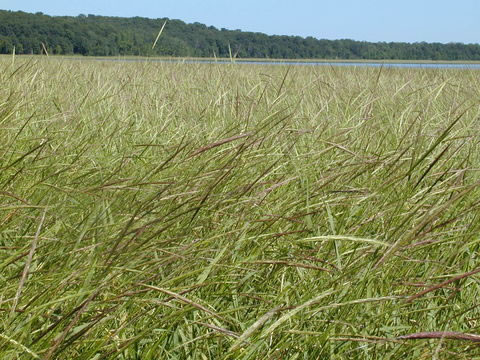Cereal, Grasses, and Grains

The grass family contains over 9,000 species distributed throughout the world. Of that, 35 have been cultivated as cereals. Of these, the following are important today:
- Barley
- Corn
- Goat grass
- Millet
Corn
Of the important grains and/or cereals listed above, only corn (maize) is a New World native. Corn is an important member of the grass family.
Corn (Zea mays) was domesticated from a wild plant called teosinte (Zea mexicana) about 7000 years ago. This species was considered sacred and was central to Mayan creation myths. Famous Mayan images show an earth god sprouting from the corn stalk.
Corn is the most efficient of the modern cereal grains in converting water and carbon dioxide into carbohydrates. Maize formed the basis for the Mayan, Aztec, and Inca civilizations in the New World.
- Corn, beans, and squash were planted together by early native Americans in companion planting to benefit all three species.
- There is no wild plant or evidence of one that resembles corn with giant husked ears; besides the ears, teosinte and corn look very similar.
- Columbus took corn to Europe on the first voyage but it did not gain wide attention.
- Native Americans had over 100 uses for the corn plant and its fruits.
- The Corn Palace in Mitchell South Dakota has been decorated with 2,000 to 3,000 bushels of corn and grasses since 1892.


Native North American Grasses
 Indian rice grass (Achnatherum hymenoides). Photo © Gary A. Monroe, hosted by the USDA-NRCS PLANTS Database.
Indian rice grass (Achnatherum hymenoides). Photo © Gary A. Monroe, hosted by the USDA-NRCS PLANTS Database.
Indian Rice Grass (Achnatherum hymenoides) is a western native grass species that served as an important food source for many Native Americans.
The seeds are large and easily harvested. Seeds were often ground and mixed with corn meal into a mush or porridge. Seed were also ground into flour used in making breads, pones, or dumplings. Plants were also used as forage for wild and domesticated animals.
Seeds were considered a good food source when suffering from a stomachache, aching bones, or colic. Indian Rice Grass was very important prior to the discovery of corn. Even after the discovery of corn, rice grass seeds were mixed with corn as a main staple.
 Northern wild rice (Zizania palustris). Photo © Eli Sagor, Encyclopedia of Life.
Northern wild rice (Zizania palustris). Photo © Eli Sagor, Encyclopedia of Life.
Wild Rice has several species in North America. Northern wild rice (Zizania palustris) is an annual plant native to the Great Lakes region of North America. Wild rice (Z. aquatica), also an annual, grows in the Saint Lawrence River Valley and on the Atlantic and Gulf coasts. Texas wild rice (Z. texana) is a perennial plant only found in a small area along the San Marcos River in central Texas.
Traditionally, wild rice was harvested by hand, with two people sitting in a canoe, with one knocking rice into the canoe with a pole while the other slowly paddled. It was harvested in the late summer, usually at the end of August and the beginning of September. The green grain was then dried, threshed and winnowed. It can be ground into a kind of meal and used for making bread; like corn, it can even be popped.
Buckwheat Grains
Although they are not part of the grass family, buckwheats are important native plants that produce grains. Grains produced were ground into flour to make mush, porridge, and bread. Roots and young stems were also eaten as a food source. Buckwheat grains today are generally ground into flour and sold in pancake mixes.


